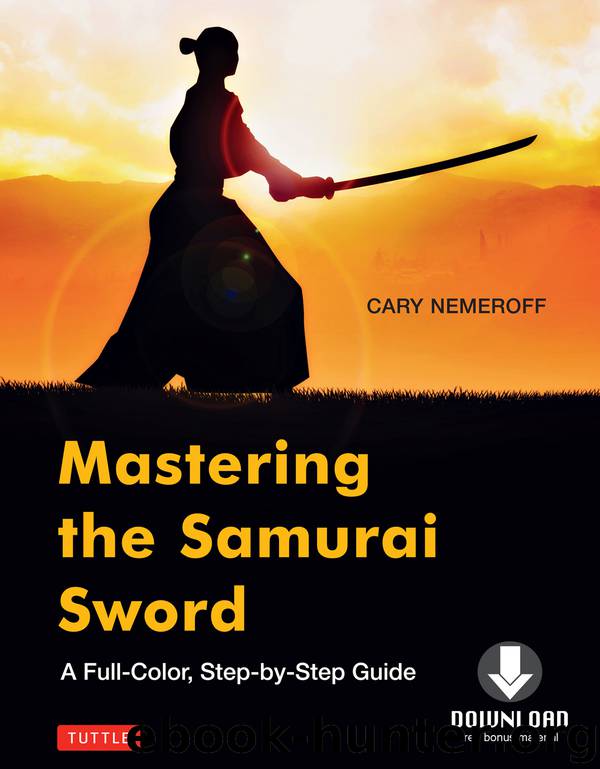Mastering the Samurai Sword by Cary Nemeroff

Author:Cary Nemeroff
Language: eng
Format: epub
ISBN: 978-0-8048-3955-6
Publisher: Tuttle Publishing
Chapter 8
Ken-Jutsu
At this point, you might be wondering why I’ve chosen to introduce ken-jutsu (techniques for the unsheathed samurai sword) prior to the introduction of iai-jutsu (methods of drawing the sword), in view of the fact that one can’t possibly “fence,” or otherwise use the samurai sword, before unsheathing it from its scabbard. However, if we look carefully at the evolution of these two samurai sword arts and the way that the physical characteristics of the samurai sword changed over time (as discussed in Chapter 1), the reason for presenting these arts in this sequence becomes clear.
Chronologically, this order is clearly the most appropriate, because ken-jutsu must have developed prior to iai-jutsu. Early samurai swords had blade lengths that ranged from two to four feet, and they were typically used on battlefields by warriors who charged en masse, like soldiers with their bayonets in the American Civil War. Due to their cumbersome length, these early blades (tachi) were impractical as quick-drawing weapons. It was not until the development of the katana, hundreds of years later, that shorter, more easily maneuvered blades became the norm. The smaller size was a boon because this type of sword was developed, not for use on the battlefield, but instead for an environment where its mere presence at a samurai’s side commanded respect and humility. This sword could be drawn in a blink of an eye if the need presented itself.
From a pedagogical perspective, it is advantageous to begin by first introducing ken-jutsu to the novice, due to the inherent complexity of iai-jutsu. The drawing techniques of iai-jutsu require the blending of many elements that eventually culminate in a smooth, flowing unsheathing. Executing this properly requires persistence, patience, and time. As an educator, I feel that it is important for a student to leave his or her first lesson feeling empowered, having gripped the tsuka correctly with both hands, assumed guard positions, and moved across the dojo with the proper footwork, while simultaneously cutting with the samurai sword. Iai-jutsu is usually a subject that I begin to touch upon during subsequent classes. For these same reasons, I have chosen to begin this discussion with ken-jutsu.
Download
This site does not store any files on its server. We only index and link to content provided by other sites. Please contact the content providers to delete copyright contents if any and email us, we'll remove relevant links or contents immediately.
Born to Run: by Christopher McDougall(7033)
Bodyweight Strength Training Anatomy by Bret Contreras(4582)
Dynamic Alignment Through Imagery by Eric Franklin(4055)
Men's Health Best by Men's Health Magazine(2478)
The Coregasm Workout by Debby Herbenick(2171)
Starting Strength by Rippetoe Mark(2042)
Relentless by Tim S Grover(2027)
Core Performance Essentials by Mark Verstegen(1932)
Bigger Faster Stronger by Greg Shepard(1929)
Endure by Alex Hutchinson(1905)
Weight Training by Thomas Baechle(1716)
Relentless: From Good to Great to Unstoppable by Tim S Grover(1620)
The Stretching Bible by Lexie Williamson(1533)
Practical Programming for Strength Training by Mark Rippetoe & Andy Baker(1501)
The Spartan Way by Joe De Sena(1468)
Good to Go by Christie Aschwanden(1422)
Dr. Jordan Metzl's Running Strong by Jordan Metzl(1359)
The Art of Throwing by Amante P. Marinas Sr(1332)
Total Hockey Training by Sean Skahan(1310)
